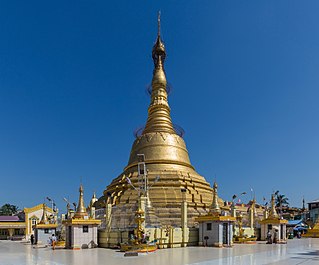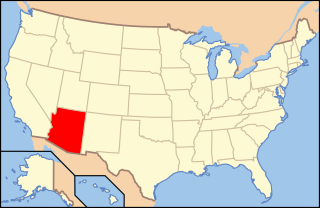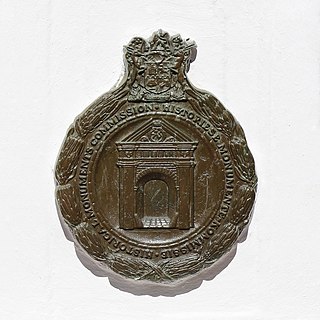
In religion, a relic is an object or article of religious significance from the past. It usually consists of the physical remains of a saint or the personal effects of the saint or venerated person preserved for purposes of veneration as a tangible memorial. Relics are an important aspect of some forms of Buddhism, Christianity, Islam, shamanism, and many other religions. Relic derives from the Latin reliquiae, meaning "remains", and a form of the Latin verb relinquere, to "leave behind, or abandon". A reliquary is a shrine that houses one or more religious relics.

The Constitution of South Africa is the supreme law of the Republic of South Africa. It provides the legal foundation for the existence of the republic, it sets out the rights and duties of its citizens, and defines the structure of the Government. The current constitution, the country's fifth, was drawn up by the Parliament elected in 1994 in the South African general election, 1994. It was promulgated by President Nelson Mandela on 18 December 1996 and came into effect on 4 February 1997, replacing the Interim Constitution of 1993. The first constitution was enacted by the South Africa Act 1909, the longest-lasting to date. Since 1961, the constitutions have promulgated a republican form of government.

The Bantu Homelands Citizenship Act, 1970 was a Self Determination or denaturalization law passed during the apartheid era of South Africa that allocated various tribes/nations of black South Africans as citizens of their traditional black tribal "homelands," or Bantustans.

The Environmental Protection Act 1990 is an Act of the Parliament of the United Kingdom that as of 2008 defines, within England and Wales and Scotland, the fundamental structure and authority for waste management and control of emissions into the environment.

The Antiquities and Monuments Ordinance, in Hong Kong Law, was enacted in 1976 to preserve the objects of historical, archaeological and palaeontological interest and for matters ancillary thereto or connected therewith. It is administered by the Antiquities Authority, with the executive support of the Antiquities and Monuments Office under the Development Bureau, since 2007.

The Botataung Kyaik De Att Pagoda is a famous pagoda located in downtown Yangon, Myanmar, near the Yangon river. The pagoda was first built by the Mon around the same time as was Shwedagon Pagoda—according to local belief, over 2500 years ago, and was known as Kyaik-de-att in Mon language. The pagoda is hollowed within, and houses what is believed to be a sacred hair of Gautama Buddha.
The Twenty-fifth Amendment of the Constitution Bill 2001 was a proposed amendment to the Constitution of Ireland to tighten the constitutional ban on abortion. It would have removed the threat of suicide as a grounds for legal abortion in the state, as well as introducing new penalties for anyone performing an abortion, by giving constitutional status to legislation proposed to be enacted after the amendment. It was narrowly rejected in a referendum held on 6 March 2002, with 50.4% against.
The Aboriginal Heritage Act 1988 (AHA) is the principal South Australian legislation protecting and preserving the state's Aboriginal heritage. It repealed and replaced the Aboriginal and Historic Relics Preservation Act 1965, which was the first state legislation to protect Aboriginal Australian heritage in Australia.

The Constitution of Australia is a constitutional document that is supreme law in Australia. It establishes Australia as a federation under a constitutional monarchy and outlines the structure and powers of the Australian government's three constituent parts, the executive, legislature, and judiciary.
Crown copyright is a type of copyright protection. It subsists in works of the governments of some Commonwealth realms and provides special copyright rules for the Crown, i.e. government departments and (generally) state entities. Each Commonwealth realm has its own Crown copyright regulations. There are therefore no common regulations that apply to all or a number of those countries. There are some considerations being made in Canada, UK, Australia and New Zealand regarding the "reuse of Crown-copyrighted material, through new licences".

The Prevention of Illegal Squatting Act, Act No 52 of 1951, formed part of the apartheid system of racial segregation in South Africa. This act authorized the forcible removal of squatting communities. It allowed eviction and destruction of homes of squatters by landowners, local authorities, and government officials. It was commenced on 6 July 1951.

The Natives Resettlement Act, Act No 19 of 1954, formed part of the apartheid system of racial segregation in South Africa. It permitted the removal of blacks from any area within and next to the magisterial district of Johannesburg by the South African government. This act was designed to remove blacks from Sophiatown to Meadowlands.
The copyright law of South Africa governs copyright, the right to control the use and distribution of artistic and creative works, in the Republic of South Africa. It is embodied in the Copyright Act, 1978 and its various amendment acts, and administered by the Companies and Intellectual Property Commission in the Department of Trade and Industry. As of March 2019 a major amendment to the law in the Copyright Amendment Bill has been approved by the South African Parliament and is awaiting signature by the President.
Internet censorship in South Africa is a developing topic.

Firearm laws in Arizona regulate the sale, possession, and use of firearms and ammunition in the state of Arizona in the United States.

The Riotous Assemblies Act, Act No 17 of 1956 in South Africa prohibited gatherings in open-air public places if the Minister of Justice considered they could endanger the public peace. Banishment was also included as a form of punishment.

The Historical Monuments Commission (HMC) was the national heritage conservation authority of South Africa from 1923 to 1969. The HMC was the first such body to be established in South Africa and was the predecessor of the National Monuments Council and therefore also of SAHRA and South Africa's provincial heritage resources authorities. From 1934 onwards the Commission became known principally for its declaration of several hundred historical monuments, later known as 'national monuments' and today as provincial heritage sites.

The Copyright Act is the legal framework that protects the use of an individual's work once the idea has been physically expressed. It is a form of intellectual property that protects original works of authorship of literary, dramatic, musical and artistic works such as poetry, novels, movies, songs, computer software and architecture. Copyright does not protect facts, ideas, systems or methods of operation, although it may protect the way these things are expressed. Ghana's current copyright law is Act 690 issued by the Parliament of the Republic of Ghana. It was enacted on 17 May 2005 and replaced Parliament's Act No. 110, the country's previous Copyright law from 1985. The Copyright law affords protection to a variety of works, grants Copyright holders rights to their work and defines the duration of that Copyright protection.
Polish law allows modern firearms ownership under Police-issued permit for people who can provide an important reason. Hunting, sport shooting and collection are the most popular reasons and require membership in suitable organizations. Self-defense reason, while allowed, requires a proof of threat to life, health or property and is rarely allowed. Antique firearms or their replicas and some air guns are available without a permit. With approximately 2.5 civilian firearms per 100 people, Poland is the 166th most armed country in the world. Less than 0.6% of citizens have valid firearm permits.

The Natural and Historical Monuments Act, 1923 was a South African Act creating a Historical Monuments Commission who's members would identity and seek to take ownership of natural and historical monuments so as to preserve them and prevent further impairment. A monument could be defined as land or scenery of distinctive beauty, fauna, flora or objects, have scientific or historical value and also included waterfalls, caves, bushman paintings, trees and buildings.











